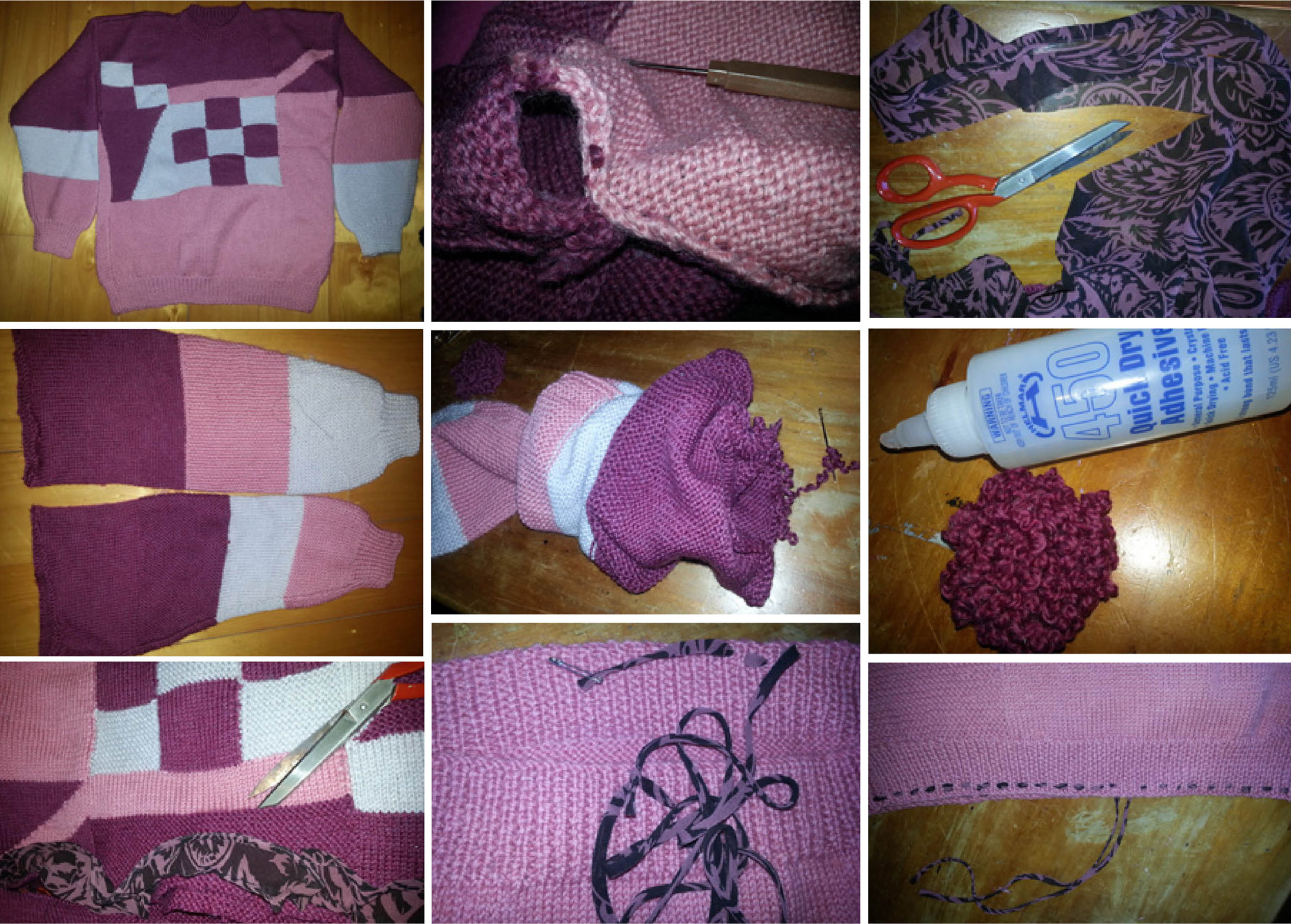 Hand knitting has undergone a resurgence in recent years due to many factors – the recession, a desire for authentic and long-lasting garments, individual expression, and the reassurance and warmth of traditional crafts.
Hand knitting has undergone a resurgence in recent years due to many factors – the recession, a desire for authentic and long-lasting garments, individual expression, and the reassurance and warmth of traditional crafts.
Although I knit scarves, I don’t have the patience to knit whole garments – yet I value them and love discovering rejects in op shops where some are dispatched to find new owners and purposes.
You can tell if garments are made of wool by the feel, weight and smell of the fibres (particularly when wet), by looking at them in the sunshine (wool doesn’t glisten) or doing the flame test to a thread (wool will smolder not ignite).
Today’s upcycle, Sew 235, was a barely worn, hand-knitted wool jumper with a busy, unique pattern which I found at an op shop. By unpicking sleeves and shoulder seams, I turned the body into a skirt, the sleeves into a scarf, and glued unravelled (froggy) wool from the neckband to revive a tin brooch. To refashion the jumper into a skirt and scarf (see how-to images at bottom), I used ribbon (from a reject silk garment) threaded through the waist as a drawstring and secured the cut edges (once shoulders now hem) using silk binding. The sleeves are just sewn together (one inside the other) and pulled back through.
It is fascinating that giant clothing retailer H&M is taking garment reuse to a whole new level with its conscious campaign – encouraging excess consumption by absolving any sense of guilt associated with it. Watch this video and see what you think. It acknowledges the waste problem caused by today’s consumption habits – yet does not address the excess use of water or energy associated with clothing churn that has seen significant escalation in synthetic fibre use in the past two decades.
